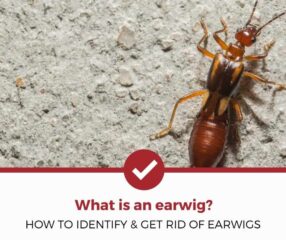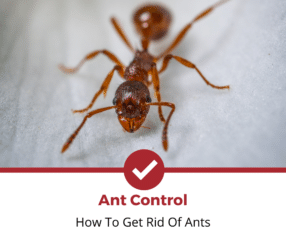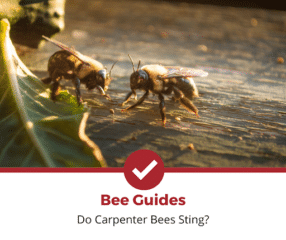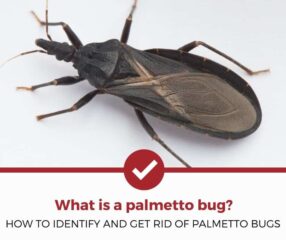If you’ve got squirrels in the house, whether they’re in the attic, wall voids, crawl spaces, or anywhere else, and you want to know how to get rid of them . . . you’ve come to the right place!
In this Pest Strategies guide you’ll learn how to:
- Identify signs of a squirrel infestation
- Locate and close their entry points
- Get them out of your house
- Protect against future incursions
Squirrels are driven by their biological urges to eat, drink, mate, nest, and explore in the furtherance of these imperatives.
Exploring is how they wind up in your house . . . and a trait we can take advantage of to eliminate them.
所以,让我们开始吧!
If trying to get rid of squirrels on your own becomes too challenging, we recommendOrkin,目的地x, andAptive. These exterminators have some of the best trained professionals that are able to use traps, baits, and other chemically treated solutions that are often more effective than standard DIY methods.
For Terminix quotes you can reach them at866-577-5051, or withthis form.
For quotes from Orkin, call866-701-4556, or fill outthis form.
For a free quote from Aptive, call855-521-7075or visit the company’swebsite.

Ed has been working in the pest control industry for years helping 1,000's of homeowners navigate the world of insect and rodent management. He manages Pest Strategies now helping homeowners around the world!

Table of Contents
How Do You Know You Have Squirrels In Your House?
If you suspect you havesquirrels in the house, is there any way to tell if it’s a rat or a squirrel? Are there any differences between the two?
Actually, yes.
It’s actually pretty straightforward.
Even though松鼠和老鼠都是机密as rodents, of the family Rodentia, they have distinct differences in behavior, droppings, tracks, and nests.
It’s also helpful to notice that squirrels and rats are competitors. As a general rule, ahigh squirrel population = a low rat population.
So, here are six ways to identify whether or not you have squirrels in your house.
Want to skip all this research and just hire a decent exterminator for your squirrel problem?
Click here to check outour exterminator search tool where we instantly send you free quotes from trusted (and thoroughly vetted) exterminators in your local area.
(Process takes about 30 seconds)
What do you hear?
Most of the time, if you’ve got squirrels in the house, they’ll start in the attic.Squirrels will run along power lines, jump from tree branches, or climb rain gutters to gain access to the roof of your house.
Squirrels are active during the day and sleep at night. If you hear scampering sounds during the day, especially from the attic, it’s most likely a squirrel.
They are larger than rats or mice, so the sounds they make will be correspondingly louder.
What do you smell?
Over time, the smell of squirrel urine will gradually become noticeable. Since squirrels are most often found in attics, the smell will be coming from the ceiling.
You may also notice the gradual formation of “water damage” spots on your ceiling. If you’re sure your roof isn’t leaking, it may not be water but urine.
It might sound a little gross, but get up on a ladder and take a sniff. Urine has a very distinctive odor to it.
Do you see some squirrel tracks?
Squirrels move in much the same way as rabbits. They will “hop” as they scout from place to place, which will put their rear paws even with, or sometimes, ahead of, their front paws.
The rear paws can be identified as the larger tracks with five toes and resemble a skeletal, five-fingered, human hand. The front paws will be smaller and only have four toes.
Put out some cardboard with flour on it where you think the squirrels are running then check for tracks. If you find tracks matching this description, you’ve got squirrels. If the tracks are different, it’s probably rats.
Do you see some nests?
Squirrel nests tend to be very big and sloppy. They are often made of a wide variety of materials – twigs, bark, grass, leaves, vines, moss, shredded insulation, paper, etc.
Rats and mice usually have burrowsrather than nests, with well smooth, rounded entrances. The differences will usually be immediately obvious.
Droppings?
If you’re not sure if you’ve got squirrels or rats in the attic, the first thing to look for is their droppings.The difference in their droppingsis a dead giveaway.
Squirrel droppings are generally brown or reddish while rat droppings tend to be very dark or black. Squirrel droppings are also barrel shaped with circular sides, while rat droppings are more oblong and rectangular with pointy edges.
Finally, squirrels tend to “go” in one place. It’s not common to see them in distinct clusters. Rats, on the other hand, will leave their droppings scattered all over the place.
If you see dark, oblong droppings all over the place, shaped like rectangles with distinct edges, you’ve probably got rats. If you see brown or red droppings shaped like barrels, clustered in little piles here and there, you’ve probably got squirrels.
Do you see entry points?
Chewing comes naturally to squirrels, as it does to all rodents. Their front teeth are constantly growing so they will gnaw and chew on hard objects to whittle their teeth down, and to sharpen them.
They can squeeze through a1/2-inch gapto get into your house, or simplychew their way inthrough the insulation, drywall, and plywood to gain entry.
In addition to chewing a hole in the siding of your house, they’ll also chew on the exposed wires in the attic. Sometimes they’ll chew so far through it they’ll electrocute themselves. It usually blows a fuse in the breaker box when it happens.
These chewed wires can also cause electrical house fires, as noted bya company in Surrey, England.That’s in addition to neighborhood-wide blackouts caused by squirrels chewing on power lines and transformers. Even theNew York Timeswrote about that a few years ago.
How Do You Find Squirrel Entry Points?
This is probably the least complicated task of all – look up.
Squirrels almost always gain entrance to houses through the attic. Occasionally they’ll come in through the crawl space if you live in a pier-and-beam house. But by and large, they come in from the roof.
一旦他们进来,他们有时在the walls, but for the most part, they’re in the attic. This is where they’ll gain entry by gnawing a hole in the fascia or squirming in through some loose boards or gaps left during construction. Before you start looking though, there’s one important thing you need to know.
A pest control technician’s first and best tool is a flashlight.
In this instance,you’rethe pest control tech. Walk around your house with a bright flashlight looking up under the eaves all the way around.
We don’t care if it’s in the middle of the day, you’re looking under the eaves and it will be darker up there. Get the brightest, strongest flashlight you can find.
A flashlight will help you see the gaps and tiny holes they’re using to get in. Put your head right against the wall so you can see straight up.
You’ll be surprised how many gaps you’ll find. Take a pad of paper with you and sketch the outline of your house, noting where all the gaps are.
Then pay close attention to areas where the squirrels have enlarged the gaps by gnawing and chewing. They don’t like squirming into their home any more than you do, so they’ll enlarge the opening.
Once you’ve identified their entry points, you’ll need to get somefine mesh chicken wireto seal off all the gapsexceptthe areas where they’ve chewed through (we’ll explain in a minute).
Don’t forget to climb up on the roof and check around the chimney and vents especially around any metal flashing that’s been bent or warped. Treat the roof with chicken wire the same way you treated the eaves.
Once you’ve done all that, you’re ready for the next step.

Find A Local Exterminator
How Do You Get Squirrels Out of Your Attic?
One way door
Short of traps and bait, the easiest and most humane method is aone way door. They come in several sizes, usually with flaps on the outside end. There is a sloped “door” in the rectangular box.
The squirrels can push it up and out of the way as they leave your house. But when they try to get back in, they’re standing on the door so naturally, they can’t open it. They’re locked out.
Squirrels don’t like being locked out of their house any more than you do, so they’ll try to chew their way back in somewhere else. This is why we had you put fine mesh chicken wire over all the other gaps around your house. It prevents them from getting back in.
Traps and baits
Instead of putting the one way door over the squirrel’s entry point, seal it off the same way you did with the rest of the gaps around the eaves and roof. This traps them inside the attic (or in some cases, outside it) so you can set outtrapsand/orbaitsto catch or kill them.
Because they’re locked in the attic it won’t take long before their attempts to escape will bring them into contact with your offerings. Eventually, their natural curiosity will drive them to investigate these foreign objects, and you’re done.
Read more: Click here to learn more about other pests that love your attic.
The video below shows a squirrel being extracted from inside the wall.
如何让松鼠的墙壁或爬行吗Spaces?
Squirrels typically don’t wind up inside walls as much as rats do. If they’re in there they may be stuck or simply exploring.
But if they’re in the walls, they generally got there through the attic or crawl space, which means they’ll come and go the same way. If they’re coming in through the attic, we’ve already discussed that.
If they’re coming in through the crawl space, the procedure is the same as for the attic. Seal off every possible entry point into the crawl space with the fine mesh chicken wire.
You’ll need to ensure the chicken wire extends a couple of inches into the ground all the way around the house because squirrels are pretty good diggers.
The down side
Unfortunately, crawl spaces are difficult to seal off completely.
There are just too many gaps for pipes, cables, vents, A/C hoses, and plumbing intrusions to be sure you got them all, not to mention the gaps between the underpinning and the house. Although a one way door could be installed in the crawl space, it’s not as likely to succeed as in the attic.
In crawl spaces, you’ll probably have to resort to traps and baits. The traps will have to be set up near the edges of the crawl space where you can reach them by getting down on your hands and knees.
Unless you’re willing to get “up close and personal with dirt” by crawling under your house, that’s probably the limit of your trapping.
You’ll almost certainly have to throw poison bait under the house in order to kill the squirrels.
Make sure you’ve got the wire mesh in place around the underpinning and as many of the other entry points as possible before you do that. The mesh might not keep squirrels out but you need to make sure it keeps your pets and children out of harm’s way!
There are a number ofsquirrel repellents and deterrents– sprays, ultrasonic noises, baffles, spikes, and “chew toys” – we’ve discussed in other articles that you can use to keep them out. A multi-pronged, multi-layered approach using one or more of them is probably the best.
Want to skip all this research and just hire a decent exterminator for your squirrel problem?
Click here to check outour exterminator search tool where we instantly send you free quotes from trusted (and thoroughly vetted) exterminators in your local area.
(Process takes about 30 seconds)
The Bottom Line About Squirrel Removal
Squirrels can be evicted from your attic (or crawl space) if you’re patient and tenacious about it. Don’t expect instantaneous results though, this is a marathon, not a sprint.
If you find the squirrels are ignoring your one way door, or they’re getting back in, redouble your efforts. Go back over your house with a fine-toothed comb until you find their new or alternate entry point.
Don’t forget the roof! Wear tennis shoes to improve your footing when you’re on the roof, and exercise some caution up there, but don’t skip it.
Remember, it only takes a 1/2-inch diameter hole for them to get in. Search it carefully, especially around the flashing. Eventually, you will find out where they’re getting in and you can seal it.
Victory can be yours. You’re smarter than those critters and it’syourhouse, not theirs. Reclaim it!









